So… I think I’ve mentioned (several times) during the run-up to the Gemini FlightBag that I had a difficult time finding fabrics that inspired me in this go-round. I’m blaming it on the stupid pandemic but finally one Saturday I found myself perusing the Spoonflower website, which is something I promised myself I wouldn’t do again.
Why, you might ask?
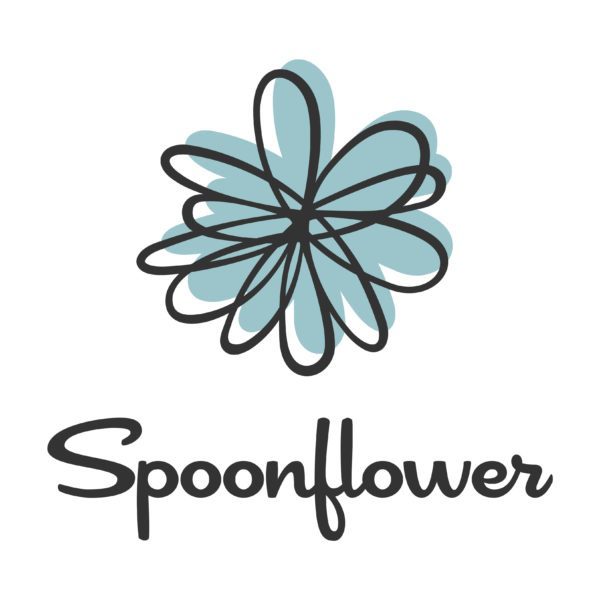
Because past experiences tell me that even though the fabric designers are fabulous, and the pictures on the website are gorgeous, the fabric is going to look tired and washed-out when it arrives in the mail and that’s SO disappointing! I’ve honestly never actually used any of the fabric I’ve bought thru Spoonflower and its been several years since I’ve even considered giving them a try again, but here’s the deal… Spoonflower has continued to grow and expand and it made me think… maybe things are better now?
But rather than be disappointed again, this time I ordered samples of my two favorite designs (which is what they recommend). And I was glad I did, because once again I was not too happy with the colorations!
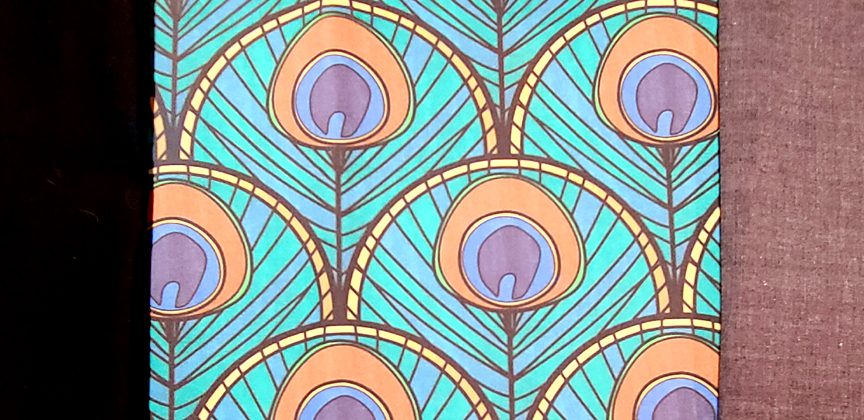
As in the past, the main thing I was disappointed in was the black areas! If you look closely at this photo, the black in the printed fabric more closely matches the grey fabric on the right, than it does the true black on the left, and this REALLY bothered me.
So this time. I called them!
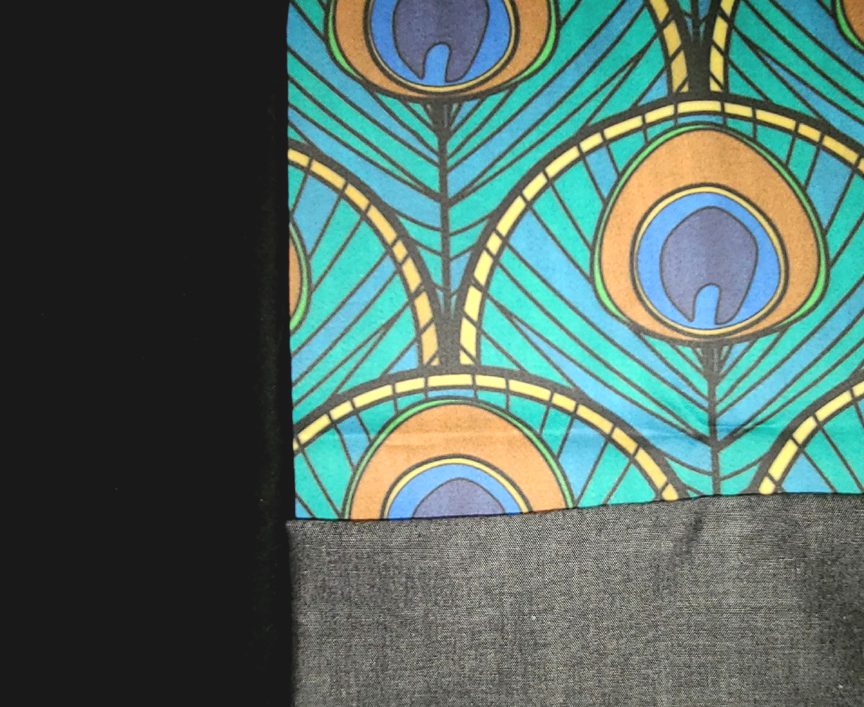
I wanted to know WHY it is that the black in their fabrics never seems to be a true black. After all, if the big fabric manufacturers can produce a true black… then why can’t Spoonflower?
The gal I spoke with was very nice but she really didn’t have a straight answer about why the blacks never seem to be a true black. She issued me a discount coupon & encouraged me to get another sample made up in “cotton sateen” rather than the 100% cotton which I did, and you can see at left. Was there a huge difference in the colorations? No… but it was slightly better and since I had deliberately chosen a fabric with very little black in the design, I went ahead and ordered a full yard in the “cotton sateen”.
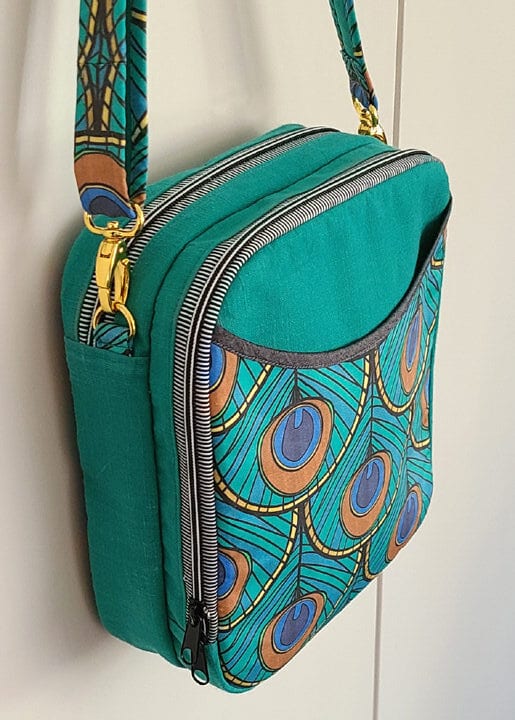
As you can see, I used this fabric in the run up to our Gemini FlightBag pattern. Because the black wasn’t a true black, I used a charcoal grey fabric for the bias tape trim on the front pocket and a matching teal green for the contrast. I think it turned out great! If you’re interested in duplicating this look, just click HERE to get some of this fabric for yourself!
So what’s the verdict on Spoonflower?
Even though I am pleased with the result of this particular bag, I still have misgivings about the Spoonflower process. It still bothers me that black is never a true black and I really don’t understand why Spoonflower can’t do better than this. Will I buy more fabric from them in the future. Perhaps… but you can bet I’ll always get a sample first and I’ll very likely limit my choices to fabrics that do NOT feature dark colors.
So here’s my recommendation, should YOU choose to do business with Spoonflower.
1- Always, ALWAYS, pay the extra up front to first purchase an actual sample of the fabric you’re interested in using. Keep in mind that this fabric is NOT cheap, so its hard to add this expense up front to the eventual cost of a yard of fabric, but it sure beats buying a whole yard of something you’re unhappy with & will never use.
2- DO NOT waste your time on a fabric that has a large percentage of black (or even navy blue for that matter) in the print. I can pretty much assure you that you’ll be disappointed in the look of Spoonflower’s black. AND… the washed-out black tends to pull down the overall vibrancy of the rest of the colors in the print!
3- DO go with an upgraded fabric choice as opposed to the 100% basic cotton. I recommend the cotton sateen fabric which had a very nice feel & finish and much more “body” than the basic cotton.
Now it’s YOUR turn!
Would any of you care to share your Spoonflower experience? After all, maybe my experience has been an isolated one. And, perhaps more importantly, if anyone out there can explain to us why Spoonflower cannot seem to produce a true black in their fabrics, I’m all ears! And remember, we love reading your comments and answering your questions too, so please feel free to leave either or both in the space provided below.
Check out the best sewing pins with me on Pinterest, join in on discussions or show off your work in our FaceBook Group, or get your daily sewing fix on our Facebook Business Page or get behind the scenes scoops on Instagram, and be the 1st to know about new patterns, discount codes and sample sales by signing up for our monthly newsletter.


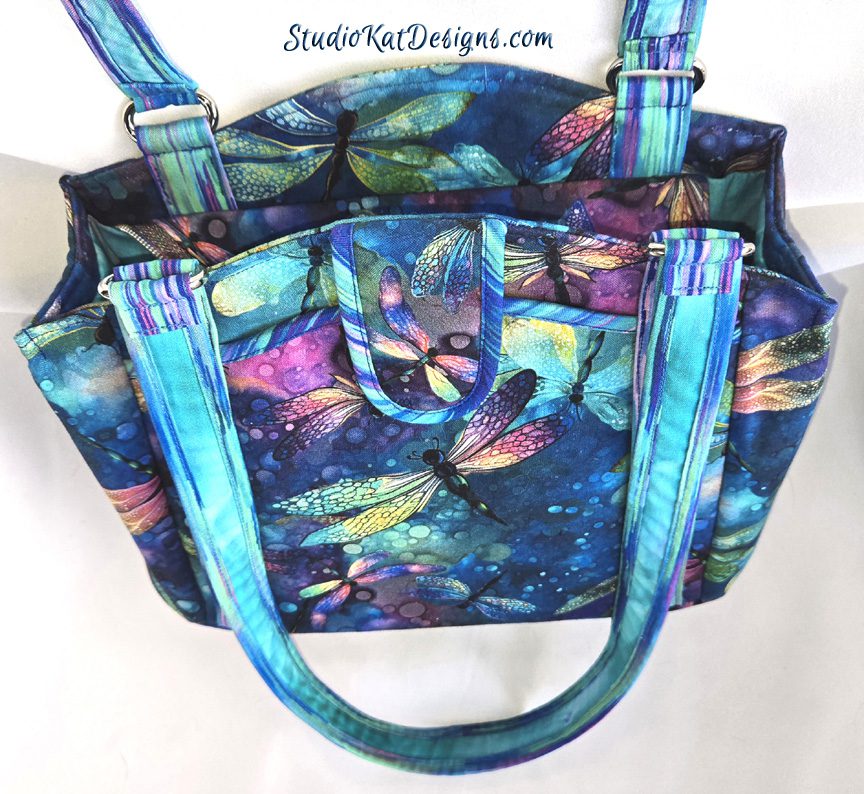

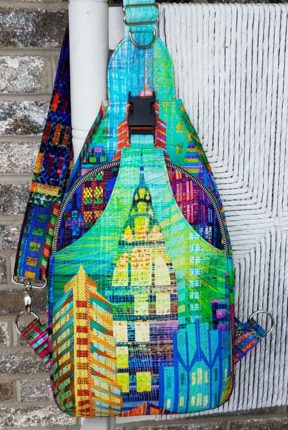
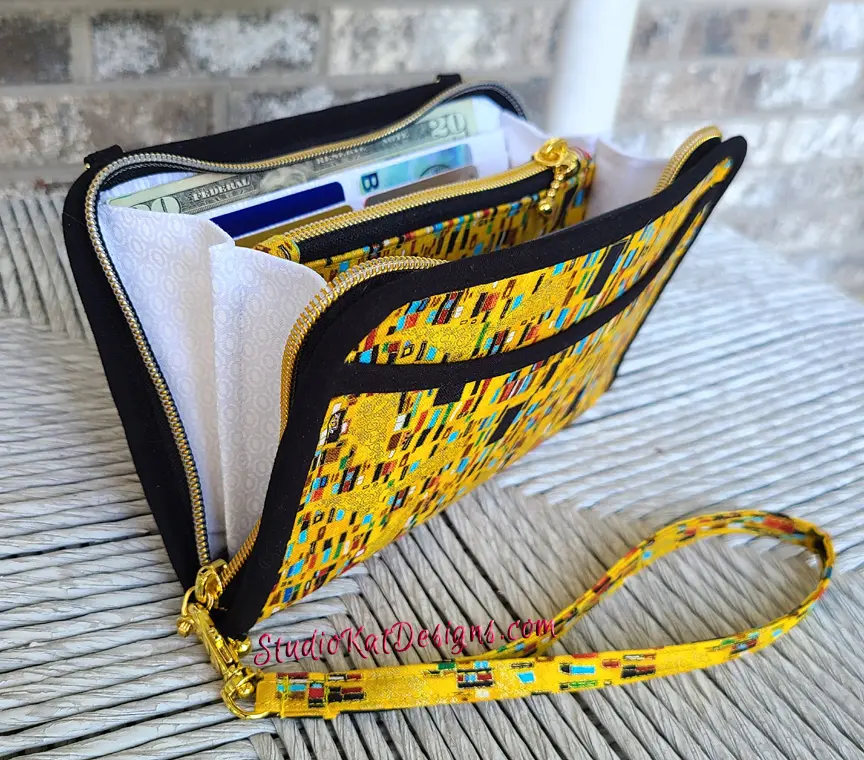

I agree with you about the dark colors not being as “rich” as I might want so I tend to work around that but I honestly have to say that Spoonflower is my absolute “go to” site when I am looking for a unique pattern or print. As an example… I was looking for some nice fabrics to make a wallet and bag for my daughter who is turning 50 and who happens to love, love, love armadillos. Not a common subject for sewing textiles! Where did I find the perfect fabric? Spoonflower of course!! I found a perfect and colorful fabric and the set turned out to be exactly what I had pictured in my mind. So yes, I agree about the dark colors but would hate to see them loose customers just because of that problem which I feel can be worked around. They really are a great source for unusual fabrics IMHO.
Thanks for commenting Sue. I’m glad I’m not the only one who feels there is a problem with the dark colors. And I agree… if your fabric is chosen carefully and as long as you get the recommended samples prior to buying your fabric, then Spoonflower is an excellent resource. I do wonder though…. Why can’t they get the dark colors saturated enough? The girl I talked seemed totally aware of the problem, so why can’t they fix it?
This doesn’t answer the question but I think you may be interested in what this person presents about the Spoonflower process. http://www.naergilien.info/real-life-research/how-spoonflower-prints-colors/
That was an interesting article and I enjoyed reading it Sue! Thanks for posting it. You’re right though. It still doesnt answer the question as to why they can’t print a true black on a cotton variety of fabric. If Kona cotton can get a true black (and they can), why cant Spoonflower? 🙂
Perhaps it’s a cost problem? Whatever it is, they must think they can get away with the inferior blacks after all these years. I remember seeing some of their fabrics someone had ordered when Spoonflower first started doing it. They didn’t feel very good. If I remember right the other colors weren’t all that fantastic either.
The basic cotton offering really is quite inferior. I guess they feel they can do this by strongly suggesting that you first purchase sample of the fabric. I guess they use the “Buyer Beware” philosophy.
I agree with Sue H. I use Spoonflower for hard to find designs. I make a lot of northwest coast designed bags and Spoonflower is where I can find them. These designs have a lot of black, red and white. I just use the basic cotton. I’m not crazy about the fabric, but I use it because I cannot get the designs anywhere else. I would say that none of their colors are really vibrant like the regular quilted cotton we normally use. The article from Sue was interesting. Thanks for posting that.
I thought the basic cotton fabric had a poor feel and inferior thread count, but the cotton sateen was considerably better.
I’ve found Spoonflower fabrics with some polyester seem to print brighter than cotton. They used to sell eco-canvas and I loved it for bag making. It didn’t hold a crease when pressed but I overlooked the shortcomings because I liked the print. Last time I looked this fabric wasn’t available so it may have been discontinued.
I’ve heard the polyester fabric are more vibrant as well, but it kind bothers me that they dont seem to be making an effort to get the colors right ALL the time, right?
Spoonflower is great if you want to make a fabric from your own design. It is cool to use the tools for the layout of the design. About a year ago, I did this for my son-in-law and was very pleased with what I received (and he was too).
I also purchased some fabric from one of the designers because it was the only fabric I could find that had Australian Shepherd dogs (our dog’s breed) and I made myself a mask.
The one problem I encountered had to do with EXTREMELY long production/shipping time. I expect that was due to the damdemic.
I chuckled when I saw the term, “damdemic”. Very clever and I’m surprised that hasnt been used extensively already! 🙂
Because I live overseas and between order and delivery, it takes weeks.
I have had good experience with Spoonflower. My only issue is the fat quarter. They seem to be printed as that, not a cut from yardage. The items I have ordered are themes I can’t find elsewhere, like Moroccan, Arabic calligraphy and Moroccan tiles.. but they are pricey.
I ordered a fish print from Spoonflower for masks. My husband asked for a mask with fish on it. Their prices are very high, so I ordered a “fat quarter” It came, but there was a large area of white all around the print, which is just a picture printed on some fabric. Since the white was part of the quarter, I wasn’t at all happy with it. Their answer was that they have that white as a “marker” for the process. They gave me a refund, but I won’t order from them again. Their turn around time isn’t bad, but I didn’t like the fabric or their prices.
Joann fabrics now offer to reproduce fabrics they carry by going through Spoonflower, for 3- 4 times what the fabric in the store sells for.